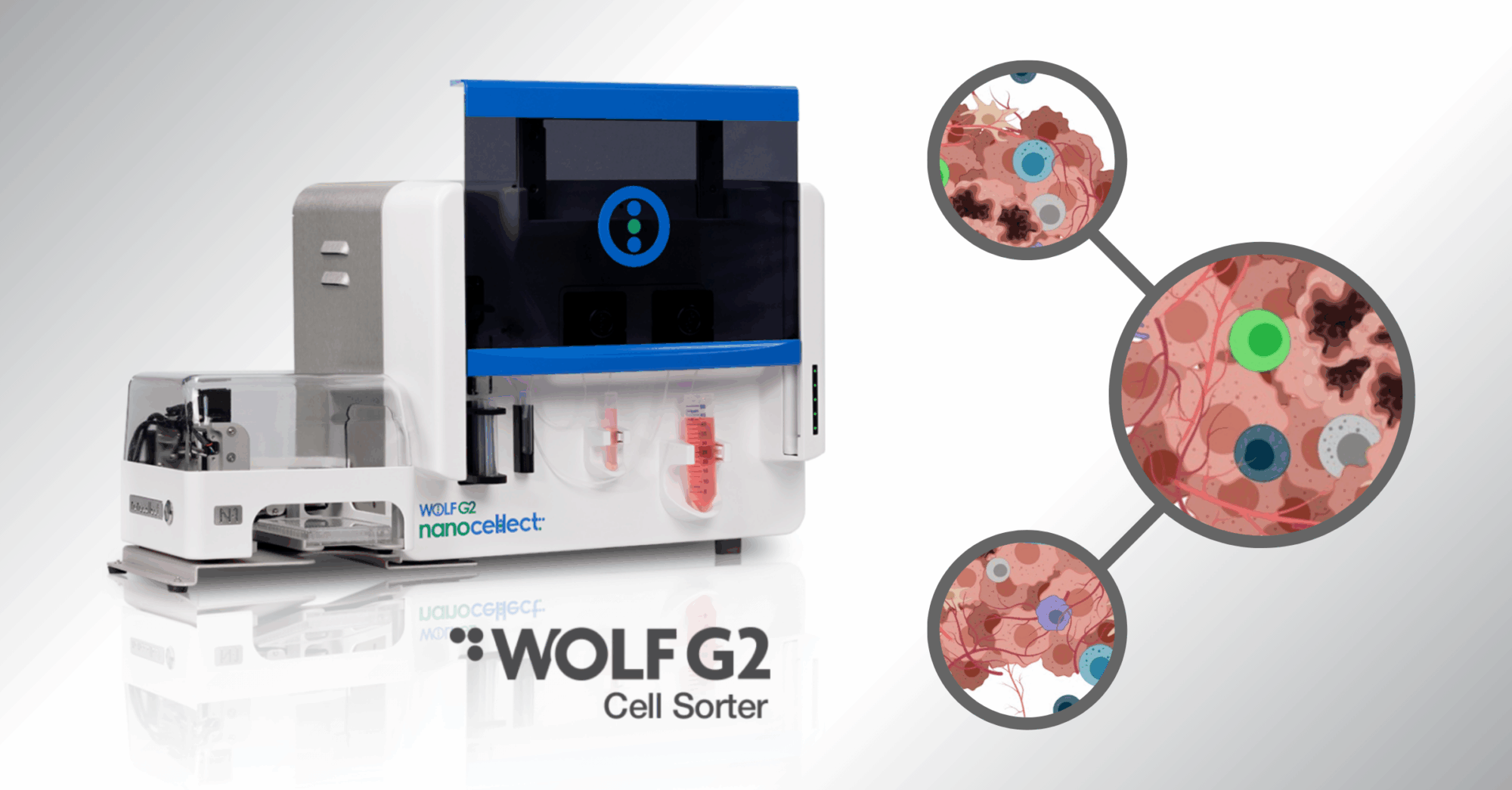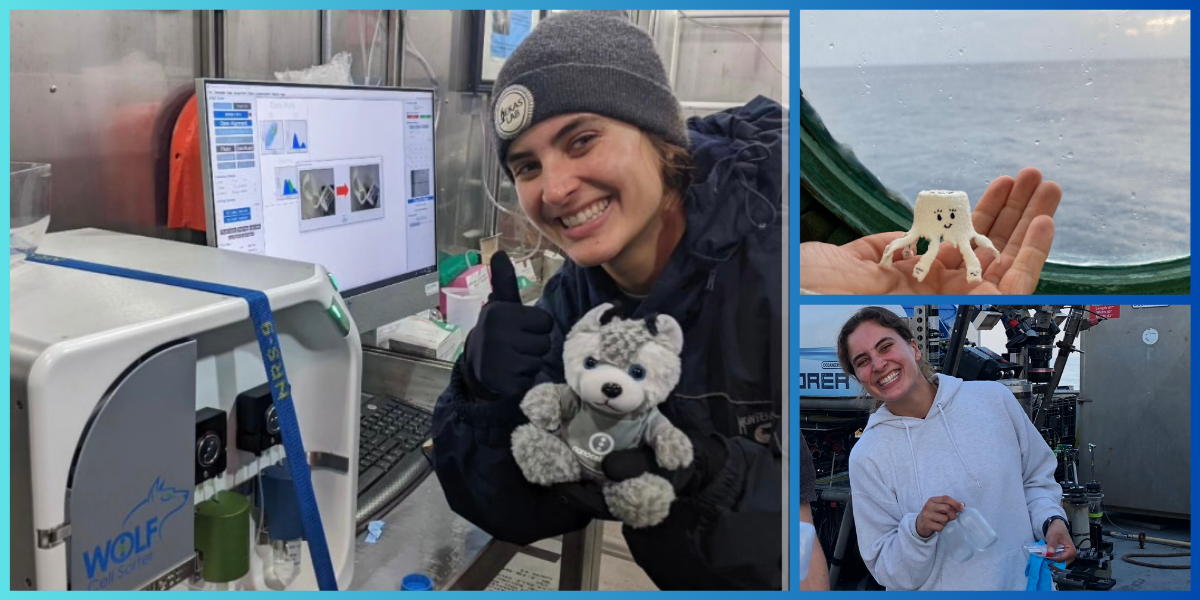How Cell Line Development Technology has Advanced Over the Years

Cell line development technology has rapidly improved in efficiency and utility in recent years. Quantitatively speaking, in an analysis of therapeutic proteins done by Tingfeng Lai, between 2006 and 2011, there were around 15 novel recombinant proteins approved by the FDA (each year) to be used in gene therapy. This unprecedented rise in cell biology products is only one mark of progress.
The advancements in flow cytometry, single cell dispensaries, micro-robotics, optics, computer technology, and more have all had significant impacts on cell line development—not to mention the progress in theoretical models which have shaped the forward momentum.
Below, you can read about both the history of cell line development, the early developments that were made in the early-, mid-, and late-1900s, and the current technological advancements.
Where Science Meets History | Cell Cultures of the Modern Era
What’s fascinating about any scientific query that relates to history is the question: “How far back should one go?”
When speaking about the history of quantum mechanics, should one begin with Einstein’s aggressive posture against the relatively new and obfuscating theory? Or should one push back further, to when humankind first gazed into fire with such a brilliant awe, knowing that it would one day incite the same reaction in Planck with the infamous lightbulb conundrum?
In the same fashion should we perform an ode to Robert Hooke who first discovered the cell in 1665? Though he had no idea the ramifications of his findings, 350 years into the future, CRISPR technology would “edit” the first human beings’ genome—a controversial topic that won’t be discussed here.
We’re getting a bit ahead of ourselves philosophically…
The Not-So-Distant History of Cell Line and Cell Culture Technology
Instead, let’s begin with a brief history of cell lines, starting with their direct ancestor: cell culture.
- 1885 – Wilhelm Roux was able to keep embryo cells from a chicken alive in a basic saline solution. When the cells survived multiple days, the first principles of cell cultures and tissue growth were established.
- 1907 – Ross Granville, an American zoologist, published a paper in which he successfully grew frog nerve fibers outside of the animal’s body. This is considered the first true evidence of cell cultures as we know it today.
- 1910–1926 – Developments in cell culture technique progress through various stages, including: hanging drop technique, aseptic techniques, trypsinization, and cell preservation. In 1926, fowl organ cultures through in vitro were cultivated by Strangeways and Fell showing considerable development.
- 1930s – Work on cell culture devices helps to develop the first subculture of cell lines, paving the way for…
- 1943 – First-ever mouse fibroblast cell line is established. The L-cells showed continuous cell growth to proliferate indefinitely.
This final piece to the puzzle would permanently change the way cultured cells were considered.
Cell Cultures Become Cell Lines
What is a cell line? A cell line is, according to the Encyclopedia of Genetics, “a permanently established cell culture that will proliferate indefinitely given appropriate fresh medium and space. Lines differ from cell strains in that they become immortalized.” Thus, these significant improvements in the early 1900s were almost all building towards this exact notion.
- Cells were first shown to be able to live outside a living body.
- Cells then demonstrated the ability to grow outside a living body.
- Cells finally were able to grow indefinitely outside a living body.
This final step was perhaps the catalyst to cloning science fiction that started to proliferate around the 1940s, and then went well into the remainder of the 20th century.
Nevertheless, now that cells were shown to be able to grow indefinitely, the litany of possible experiments gave rise to incredible bodies of diverse research. And in the 1950s, a particular cell became the draw of every cell biologist’s attention.
1950s | The Introduction of Two Major Cell Lines
During the course of the ‘50s, cell lines were being fussed over. The first human cell line was established in 1951 from a patient with cervical cancer. This starts a large swatch of research for scientists due to the potential benefit of recombinant protein production for pharmaceutical properties (human cells being able to produce natural synthesizable proteins compared with other mammalian expression systems).
Though human cell lines make sense in theory, there are also disadvantages to using such a complicated protein structure for modification and mutant protein production.
As more has been unearthed about human cell lines, some blatant downsides include delayed acceptance, low protein yield, and high investment. However, today they’re still used in the manufacturing process of vaccines because of their (obvious) characteristics.
This has allowed many different protein gene expression systems to come into the picture, including:
- Yeast expression
- Algae expression
- Insect expression
- E. coli expression
- Mammalian expression (apart from human cells)
It’s in the mammalian cells expression category where established cell line development technology became interesting. Introducing the second major cell line: Chinese hamster ovary cells (CHO cells).
CHO Cells | Where They Fit In Expression Systems
Chinese hamster ovary cells, though an odd choice at the time, have been found to be incredibly useful for cell line technology and further advancing fields of cancer research, pharmaceutical drug creation, and biological research. These genetically stable cells solve many of the pain points of other complicated mammalian expression systems, while offering the many benefits of lower organism expression systems.
While there is no one-size-fits-all approach to recombinant protein production—each type listed above coming with its own set of benefits and disadvantages but there are common characteristics:
- Yeast, bacterial, and plant-based expression systems tend to be easier to work with and are significantly more scalable. This is due to the non-complex nature of their existing genomic DNA and RNA structures. Yet, this lack of complexity makes it more difficult to create working transfection models for human compatibility.
- Insect and mammalian models are generally the opposite. They’re more difficult and time-consuming to work with, but they produce more effective nucleic acid delivery systems for human compatibility.
CHO cells—the face of continuous cell line technology—have been shown to provide the best of both worlds.
The Face of Cell Line Technology
In 1986, the FDA approved CHO tissue plasminogen activator use in manufacturing therapeutic products. This approval sent the research skyrocketing and in more than 30 years, the results are in: CHO cells have tremendous value in cell line development.
This is particularly well-documented in the analysis work done by Tingfeng Lai (mentioned at the start of this article), where CHO cells have been shown to have several benefits, five of which are outlined:
“First, CHO cells are capable of adapting and growing in suspension culture which is ideal for large scale culture in the industry.
Second, CHO cells pose less risk as few human viruses are able to propagate in them.
Third, CHO cells can grow in serum-free and chemically defined media which ensures reproducibility between different batches of cell culture.
Fourth, CHO cells allow post translational modifications to recombinant proteins which are compatible and bioactive in humans. Specifically, glycosylation of glycoproteins produced by CHO cells are more human-like, with the absence of immunogenic α-galactose epitopes.
Fifth, several gene amplification systems are well established to make use of the genome instability of CHO cells to allow for marker gene amplification which ultimately result in higher yield of recombinant protein.”
Where does that leave the most current technological advancements?
The Technological Advancements That Bring Us To Modern Day
This historical take on cell cultures, cell lines, protein expression systems, and CHO cells lead us up to the present day. Still, many advancements are being made on technology and technique to further improve cell line methodology. These include:
- Protein Expression Technologies – With advancements in vector engineering, internal ribosome entry site techniques, selection marker attenuation, artificial chromosome expression systems, and more, protein expression has been made easier, and far more accessible to individual labs.
- Cell Sorting and Flow Cytometers –Flow cytometers use principles of fluid dynamics, optics, and electronics to analyze individual cells and sort them based on the laser optic light scatter. Traditionally, these have been incredibly useful for time-saving benefits, though their results are met with mixed reactions. Because of the high pressures involved, cells used in stable cell lines are often damaged, dead, and unusable—they do not propagate.
Thus, advances in flow cytometry have greatly impacted cell line development. NanoCellect is one company that has reduced the harsh adverse effects of flow cytometers by reducing internal pressures to less than a tenth of industry standard equipment. The WOLF Cell Sorter helps laboratories continue to sort cells in an efficient process without sacrificing a healthy cell population.
- Transfection Strategies – Similarly to flow cytometers, the advancements in basic techniques and technologies improve the cell viability well after transient transfection takes place. Transfection efficiency rates have greatly improved over the last twenty years, allowing for faster publication times due to improved data.
- Fluorescence Activated Cell Sorting – The ability to appropriately tag cells to improve sorting techniques allows for more accurate cell lines with homogenous samples.
Where Cell Line Technology Will Go
With such a rich and developed history, cell line development technology has both a storied past and a bright future. With CRISPR technologies and pharmaceutical drug researchers leading the charge into exciting territories, it’s a wait-and-see game as far as where cell line technology will go next.
If your lab is currently trying to lead the pack, then you probably rely on quick and efficient cell sorting technology to begin your experiments. But if you’re not utilizing NanoCellect’s WOLF G2 Cell Sorter, you’re probably suffering from below optimal healthy cell populations.
With flow cytometers that are ten times gentler than the next leading brand, NanoCellect stands as the champion of happy, healthy cells everywhere.
Sources:
- NCBI. Advances in Mammalian Cell Line Development Technologies for Recombinant Protein Production. https://www.ncbi.nlm.nih.gov/pmc/articles/PMC3817724/
- Science Mag. CRISPR bombshell: Chinese researcher claims to have created gene-edited twins. https://www.sciencemag.org/news/2018/11/crispr-bombshell-chinese-researcher-claims-have-created-gene-edited-twins
- Healthcare Industry BW. Cell culture technology: it all started with frog nerve fibres. https://www.gesundheitsindustrie-bw.de/en/article/dossier/cell-culture-technology-it-all-started-with-frog-nerve-fibres
- Encyclopedia Britannica. Ross Granville Harrison. https://www.britannica.com/biography/Ross-Granville-Harrison
- The Royal Society. Experimental studies on the differentiation of embryonic tissues growing in vivo and in vitro.—II. The development of the isolated early embryonic eye of the fowl when cultivated in vitro. https://royalsocietypublishing.org/doi/10.1098/rspb.1926.0049
- Intech Open. History of Cell Culture. https://www.intechopen.com/books/new-insights-into-cell-culture-technology/history-of-cell-culture
- Science Direct. Cell Lines. https://www.sciencedirect.com/topics/neuroscience/cell-lines
- SFE. Clones. http://www.sf-encyclopedia.com/entry/clones
- Critical Reviews in Biotechnology. Human cell lines for biopharmaceutical manufacturing: history, status, and future perspectives. https://www.tandfonline.com/doi/full/10.3109/07388551.2015.1084266



